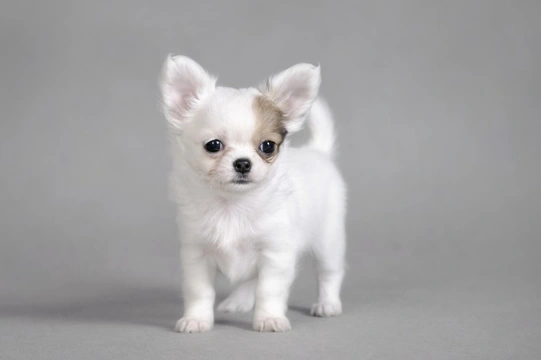
Breathing problems in the Chihuahua
The Chihuahua is one of the most popular toy dog or lapdog breeds, being widely owned within the UK and worldwide. While they are actually rather tougher than their small, delicate builds would lead you to believe, the Chihuahua may nevertheless be afflicted with certain chronic health problems that are more prevalent within the breed than most others, due to a combination of hereditary traits and anatomical problems. One issue that can potentially afflict the little Chihuahua is breathing difficulties, which may have a range of causes behind it.
In this article, we will look at breathing problems in the Chihuahua in more detail. Read on to learn more.
The causes of breathing problems in Chihuahuas
A wide range of different causes including genetics and accidents can contribute to breathing problems in the Chihuahua, but these are most commonly caused by one of two conditions: pulmonic stenosis, and tracheal collapse.
Pulmonic stenosis
Pulmonic stenosis is a condition that causes a restriction of blood flow to and from the heart, which means that the blood itself does not get enough oxygen, leading to problems breathing. The symptoms of pulmonic stenosis in the Chihuahua include:
- Breathing difficulties.
- Fatigue.
- A thready, irregular pulse rate.
- Lack of tolerance for exercise.
- An irregular heartbeat.
- Potentially, abdominal swelling.
- Pale mucous membranes.
Tracheal collapse
Tracheal collapse is a condition that occurs when the trachea, or the tube connecting the lungs to the throat, becomes compressed or unable to support itself with the cartilage rings along its length, causing it to flatten out and making breathing difficult. Some dogs may be born with the condition as a hereditary issue, but tracheal collapse can also be caused by too much pressure being applied to the neck, such as by a tightly fitting collar or pulling on the lead.
The symptoms of tracheal collapse in the Chihuahua include:
- A dry, hacking cough that may be present even when the dog is asleep.
- Gasping or gulping for air, or other indications of breathing difficulties.
- Inability to swallow food normally.
- A rash around the area where the collar lies.
- Drooling.
- Anaemia.
Identifying breathing problems in the Chihuahua
If your Chihuahua is exhibiting any of the above symptoms or if you otherwise have any cause for concern over their ability to breathe freely, you should take them along to the vet ASAP for a check-up and diagnosis. Many problems can be resolved if caught early on, but will become more challenging to correct if left to develop. Your vet will perform a physical examination on your dog, and may also use diagnostic tools such as radiograms to identify a collapsed trachea, or heart scans to look for the narrowing that is the signature of pulmonic stenosis.
Once your vet has reached a diagnosis on your dog’s condition and the cause of the problem, they will be able to decide how best to proceed.
Treating pulmonic stenosis and collapsed trachea
In order to treat either pulmonic stenosis or a collapsed trachea in your Chihuahua, surgical intervention will usually be required. A collapsed trachea can be repaired and supported, and heart surgery can help to widen the narrowed arteries, allowing the blood to circulate around the body more freely.
If the problem is only very mild and is not causing significant problems for your dog, surgery may not be required, although in this case, your dog will need regular check-ups to monitor the condition, and possibly, supportive therapy to make their life easier.
Can you prevent breathing problems from developing in the Chihuahua?
There is virtually nothing that you can do to avoid your dog developing or being born with pulmonic stenosis, other than doing what you can to find out about the health and longevity of the dog’s ancestors and if they too suffered from any health problems in order to ensure that you buy a healthy pup.
Tracheal collapse can also be hereditary too, in which case there is again nothing that you can do to stop the condition from developing, however, in some cases, tracheal collapse can be caused or worsened by injury or handling, which can of course be prevented.
Always ensure that your dog’s collar is a good fit and not too tight for them, and use a collar made of soft, supple material rather than something stiff. Never yank or pull on the lead, in order to avoid damaging the delicate throat of the small Chihuahua.
Using a body harness rather than a collar that applies pressure directly to the neck can help to prevent tracheal collapse from developing in some dogs, or worsening in dogs that are already affected with the condition. As the Chihuahua is so small, starting off with a harness rather than a collar is a good idea, and these are made in many different materials and sizes to suit even the very smallest of dogs.



